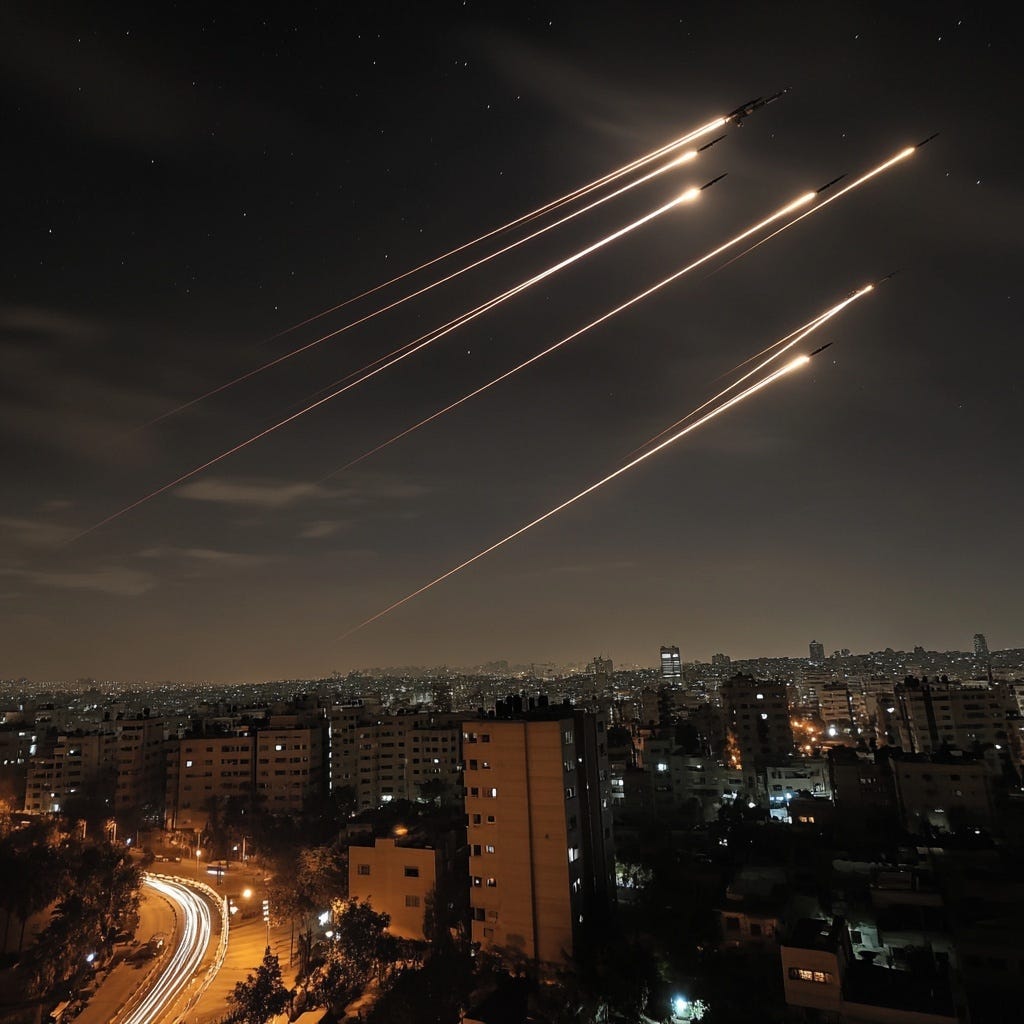Over the past 24 hours, Israel and Iran have crossed a critical threshold. What began as a high-intensity confrontation is now edging toward strategic rupture. Israel’s air campaign, entering its fourth consecutive day, has only accelerated in pace and scope.
Overnight and into Monday, Israeli fighter jets launched a coordinated wave of strikes across Tehran, targeting both military infrastructure and symbolic assets. In response, Iran fired its most extensive missile barrage of the war, directing dozens of ballistic missiles toward Israeli urban centers.
The resulting exchange has driven civilian casualties higher on both sides. Iranian missiles killed at least eight civilians overnight in Israel, while sustained Israeli airstrikes have pushed the death toll in Iran past two hundred.
Israel’s military claims it has achieved full, albeit temporary, aerial dominance over Iranian airspace, enabling it to systematically degrade Tehran’s critical infrastructure. Among the most prominent strikes on Monday was the bombing of Iran’s state broadcaster headquarters, IRIB.
The facility, located in Tehran’s District 3, was hit mid-broadcast. Live programming abruptly cut to black as smoke filled the studio and the anchor fled on air. The Israeli Defense Forces had issued prior warnings to civilians in the area, underscoring their characterization of IRIB as part of Iran’s command-and-control apparatus.
Defense Minister Israel Katz called the network “about to disappear,” signaling that Israel’s war aims now include not only physical but also psychological and informational assets of the Iranian regime. Throughout the day, multiple explosions echoed across Tehran. Local footage showed collapsed structures, oil depots in flames, and buildings torn open—twisted rebar protruding from blackened concrete. The urban landscape is being reshaped by the weight of precision-guided munitions.
Iran’s response has grown sharper. In the early hours of Monday, it launched a fresh wave of ballistic missiles—the most extensive retaliation thus far. Air raid sirens activated across Tel Aviv and even Jerusalem as Iranian warheads challenged Israel’s layered missile defense network.
While Arrow and Iron Dome systems intercepted the majority of incoming threats, Israeli authorities confirmed that roughly seven missiles penetrated defenses. Two struck residential buildings in Tel Aviv’s outer suburbs, killing eight people and injuring over one hundred.
First responders pulled bodies from the rubble throughout Monday, including three elderly civilians extracted from collapsed residential structures. Iran’s Islamic Revolutionary Guard Corps (IRGC) later claimed it had employed tactics intended to overwhelm and confuse Israel’s air defenses, deploying overlapping decoys to saturate radar systems. The maneuver, according to the IRGC, forced Israel’s Arrow and Iron Dome platforms to engage false targets—creating gaps that allowed a handful of ballistic missiles to break through.
The U.S. Embassy’s branch office in Tel Aviv sustained minor damage from nearby impacts. No American personnel were injured.
By Monday afternoon, Israel’s civilian death toll had climbed to 24. In contrast, Iranian authorities reported 224 fatalities, the majority of them civilians. The asymmetry reflects the intensity and precision of Israel’s aerial campaign, which has targeted areas believed to host military-adjacent infrastructure embedded in densely populated neighborhoods.
Prime Minister Benjamin Netanyahu stated the campaign is “on the path to victory,” emphasizing gains in degrading Iran’s missile capabilities and nuclear infrastructure. He issued warnings to civilians in Tehran, advising them to evacuate designated zones—an indication that Israel’s operation remains in its early phases.
Netanyahu further suggested that targeting Iran’s Supreme Leader was under consideration, framing such a strike as a possible means to conclude rather than escalate the conflict. The statement marked a notable shift from strategic ambiguity toward a more declarative posture. “The residents of Tehran will pay the price,” one Israeli official said bluntly.
Iranian military officials denounced the Israeli attacks as acts of terrorism and violations of international law. The IRGC pledged that Israel would…
Keep reading with a 7-day free trial
Subscribe to Pantheon Insights to keep reading this post and get 7 days of free access to the full post archives.




